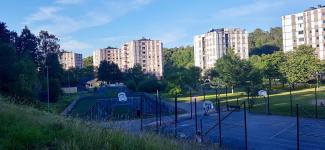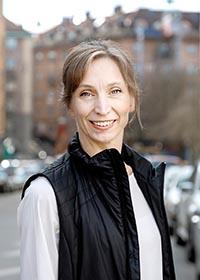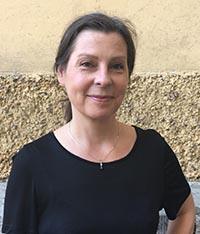How urban design and planning can combat inequalities
Urban design and planning can help create greater social sustainability in Gothenburg. This is shown by analyses conducted in the Mistra Urban Futures project Divided City, which has had a direct impact in Bergsjön.
“We have enhanced our understanding of the way in which urban design and planning can combat ill-health and inequalities of various kinds,” says Mari Tastare, a planning officer at the City Planning Office in the City of Gothenburg.

The aim of Divided City was to put urban research into practice in Gothenburg and to build bridges between researchers and practitioners.
“It has been an important project for making research available to the municipality and to practitioners. We have provided findings from the research to the City of Gothenburg, which has done a great deal of work on social sustainability issues and really wants to develop these aspects further,” says Ann Legeby, project manager for research into Divided City and a researcher at KTH Royal Institute of Technology in Stockholm.

Local resources and available services
The project looked at the way in which urban design and planning is linked to exclusion and segregation. Comprehensive analyses of differences in living conditions in Gothenburg resulted in a new approach to the way in which urban design and planning can help to combat segregation, exclusion and unequal living conditions, thus contributing to greater social sustainability. In this context living conditions means the circumstances in which you live, in other words the resources and the public and commercial services which are available locally – everything from health centres and schools to supermarkets and libraries.
"Knowledge about the role of architecture and urban design and planning in relation to segregation"
“The main benefit was in demonstrating the role of urban design and planning in shaping the living conditions and circumstances of everyday life created in different districts. We contributed knowledge about the role of architecture and urban design and planning in relation to segregation and used analytical tools to carry out these types of detailed and comprehensive surveys,” Legeby says.
The analyses consider urban form and the built environment themselves, which makes the method relevant to urban design and planning. There are therefore things which can be influenced when something is newly built or when districts are developed.
This type of analysis is required by the City of Gothenburg in strategic urban development projects to pick up all the social impacts of an urban planning initiative. The Divided City analyses have made it easier for the municipality to understand what sort of social impacts future urban planning investment will have, and to evaluate alternative solutions.
“We have created a model of the city containing the relevant data relating to social resources which is available for officials to use. The project has also helped to enhance expertise as to how to perform analyses and how to interpret the findings so that they can guide future design and decision-making processes,” says Legeby.
Impact on development of Bergsjön

Divided City has had the greatest impact in Bergsjön, where a specific study and a workshop took place.
“With the analytical tools we created we can analyse the urban design and planning actions that produce the best impact in a district to combat something such as social ill-health,” Tastare says.
This resulted in a proposal containing actions to smooth out inequalities in living conditions. The proposal aimed to link together the different parts of Bergsjön more clearly, for example by creating new streets and footpaths, thus making it easier to find your way round the area.
"Methods devised in urban research were used in Bergsjön"
The analytical tool was applied specifically to Bergsjön. The statistics and facts which were developed in the project contributed to the local plan for the development of Bergsjön.
“Methods devised in urban research were used in Bergsjön as a design tool to develop and research future scenarios in Bergsjön,” Legeby says.
"The collaboration will also leave its mark on how we formulate research questions in future"
The project Metropolitan Cities in Collaboration is a direct spin-off from Divided City. In this project the municipalities of Gothenburg, Stockholm and Malmö exchanged knowledge and experiences. Regional planning departments also joined the network.
“The collaboration between researchers and practitioners provides the opportunity to update oneself in the field in a way which is relevant to ongoing work and makes it easier to take on board. The collaboration will also leave its mark on how we formulate research questions in future,” Legeby says.
It is clearly evident that the project was appreciated both by the City of Gothenburg and other municipalities.
“I still get requests to lecture on Divided City and to continue working on these issues in other municipalities such as Linköping and Uppsala,” she says. A continuation of the project in the form of Divided City 2.0 is currently under discussion.
Project facts
Project title: Divided City
Partners: KTH School of Architecture and City of Gothenburg
Project period: September 2013 – March 2015
Financier: Swedish National Board of Housing, Building and Planning